Calculate your personalized quote on DRIVEK
The Volvo XC40 is a 4.4 meter SUV. There are combustion engine, plug-in hybrid and electric versions. In this article we focus on the latter, called Recharge Pure Electric. The XC40 is on sale with 238 hp.
It is an interesting car for its price/performance ratio and for the feeling of quality it conveys. The downside of the 408 hp version we tested is the high fuel consumption, while the best aspect is the high acceleration.
Some of the alternatives to the XC40 are the BMW iX1, the Kia e-Niro, the Mazda MX-30, the Mercedes-Benz EQA, the Lexus UX 300e or the smart #1. Models from BMW, smart and Lexus have a higher starting price than Volvo.
The Volvo rear wheels, instead of the front ones as previously), new batteries and increase in maximum charging power to 200 kW.
The version we tested of the XC40 is the one with 408 HP (Recharge Pure Twin Electric) with the new 78 kWh battery. Its acceleration capacity is very high and the autonomy is not as much as the consumption: in this respect there are no improvements compared to the previous model of equal power. In real-world conditions, you can travel about 350 kilometers on a full battery charge, if you drive more or less efficiently. On the highway, this distance is not normally reached. What has improved significantly compared to the previous XC40 is the battery charging speed, especially at the end of the battery.
Although this 408 HP Volvo market as it offers an excellent price/performance ratio. There is only one other more powerful SUV: the smart #1 Brabus (428 HP), which is more limited for travel as its range in real-world conditions at highway speeds is just over 250 kilometers.
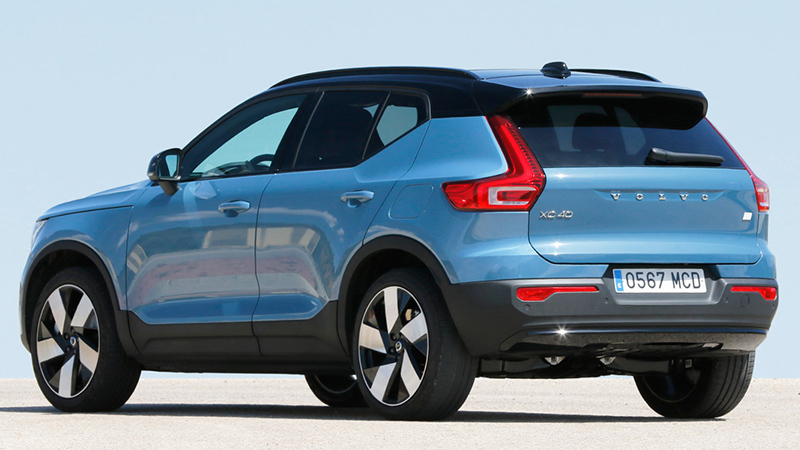
Overall impressions of the XC40 Recharge Pure Electric
The Volvo XC40 gives a good impression of quality based on the look and feel of the interior, as well as the smoothness of the ride. In these respects, I believe it is not very far from cars like the BMW iX1 or the Mercedes-Benz EQA.
The most significant difference between this Volvo and the BMW or Mercedes-Benz is, in our opinion, in the equipment of technological and driver assistance devices, which in the Volvo are less advanced or not as well made. For example: the Volvo's surround cameras are not of exceptional quality (although they do their job well, image-wise), the active cruise control does not have a predictive efficiency assistant, the urban emergency braking system is not capable of detecting oncoming traffic at an intersection or the blind spot detection system does not act on the steering when there is a risk of collision with the passing vehicle. BMW or Mercedes-Benz also offer more attractive and more configurable displays and multimedia systems.
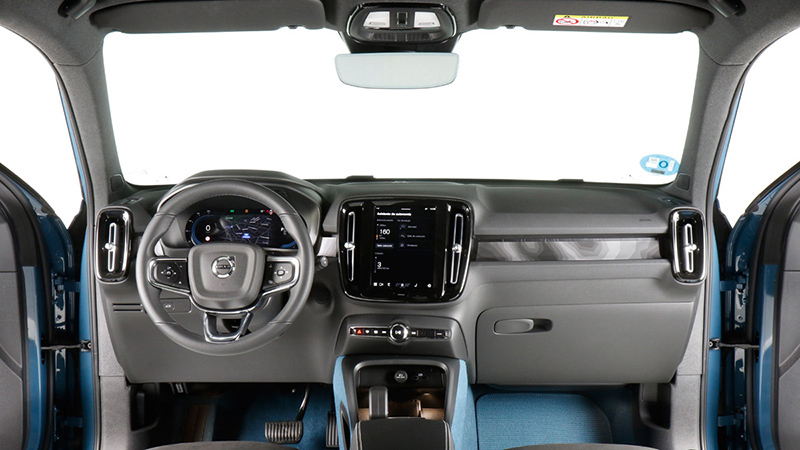
The interior of the XC40 has a discreet and elegant design and layout of controls. Volvo has significantly reduced the number of buttons on the dashboard, and in our opinion, it has done so very well, because it is one of the few cars we have tested recently in which we have not felt the lack of other physical buttons. The central display (vertically oriented and of good quality) is easy to use because the various menus and functions are simply structured.
Android Automotive
Volvo uses the Android Automotive multimedia system in the XC40, which has the advantage that many users will already be accustomed to its operation, menus and navigation system maps (the latter are from Google). Overall, Android Auto seems to me to be a convenient solution, although it should be noted that it does not have as many functions and possibilities as an Android phone. For example, you cannot download any applications from the PlayStore, but only a few which mainly boil down to radio, music, news, podcasts and audiobooks. The Android Automotive in this Volvo XC40 does not have Android Auto and it is not possible to replicate the contents of the phone on the car screen.
Your voice can be used to choose a destination, tune in to a radio station or request activation of the music service. For example, if the driver says “I want to listen to music”, the system responds “OK, I can play it on Youtube Music or Spotify, which one do you want me to use?”, even though these applications must be installed and have a registered account to work.
Driving impressions
The most notable, although not the most important, quality of the Volvo XC40 Recharge Pure Twin Electric (408 HP) is its acceleration ability: according to our measurements, it takes 2.8 seconds to go from 80 to 120 kilometers per hour. Such acceleration capability is now relatively standard for electric cars (for example, the Tesla Model 3 and Model Y All Wheel Drive Long Range accelerate similarly), but until recently such figures were reserved for sports cars with combustion engine, sometimes much more expensive and exclusive than this XC40.
We found the suspension setup very comfortable, because it isolates bumps quite well and also masks the fact that the overall weight of the car is very high. This doesn't mean the XC40 is an agile or sporty car. The BMW iX1 has slightly quicker steering and quicker reactions, although this is only noticeable at high cornering speeds.
Our test car produced a somewhat loud rolling noise on worn asphalt. It was equipped with optional very wide tires (front 235/45 R20, rear 255/40 R20). On the same roads, a BMW iX1 with 245/45 R19 tires (the largest available) is quieter.
Calculate your personalized quote on DRIVEK
The 408 hp dual-motor XC40 is not a permanent all-wheel drive car. When starting and at very low speeds, the only engine responsible for moving the car is the rear one. This gave rise to some curious situations such as, for example, when exiting a car park with a steep slope to negotiate laterally, the car found itself with very little forward movement, given that one rear wheel was practically in the air (this problem is solved partly by activating the off-road driving mode).
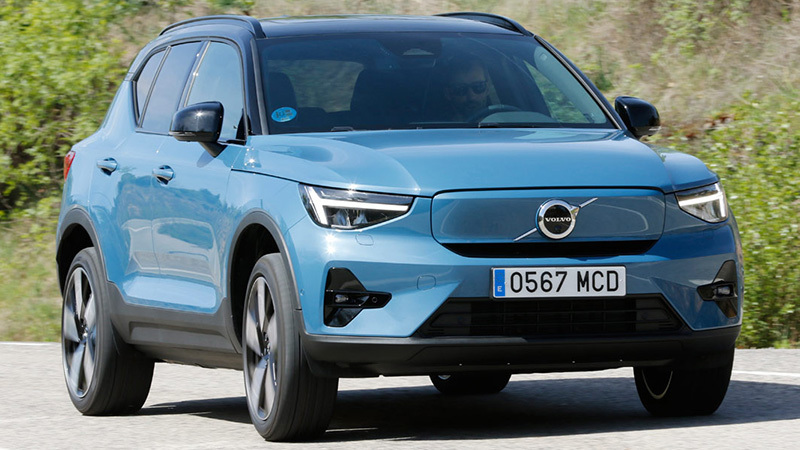
One of the things that struck us most about the XC40 is its ease of use. This XC40 does not have the usual driving modes (Sport, Comfort, etc.) that are present in many other electric cars, nor does it have paddles behind the steering wheel to adjust deceleration. There's not even B mode to ensure greater grip on descents and it's missed because the XC40 tends to pack a little more than usual on mountain passes.
Among the available functions there is a driving program designed for off-road (Off-Road Mode, which “manages the power delivery of the engines to progress on slippery surfaces” and activates hill descent control), a driving with just one pedal (One Pedal) and the possibility of stiffening the steering (Firm Steering Mode). We didn't find much value in this option, as the standard setting offers a good feel and a firmness that we think is just right. All these functions are accessible only from the display.
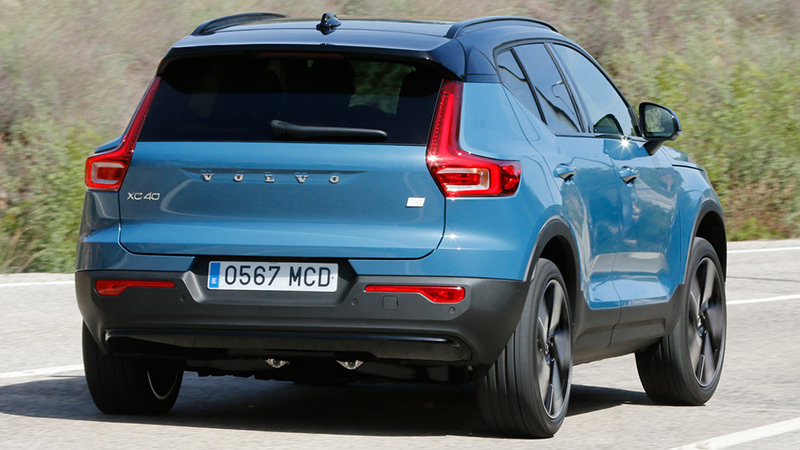
The braking system does its job quite well: it is not able to stop the XC40 over particularly short distances (our car took 54.1 meters to stop from 120 km/h), but it does not overheat too much if, for example For example, you travel over a mountain pass with just a few taps on the brakes or if you make some sudden stops. Furthermore, the pedal feels good even at very low speeds and allows you to stop the car with ease. If One Pedal mode is activated, it is not necessary to apply the brakes except in exceptional circumstances.
Consumption
Overall, the XC40 Twin (408 HP) is a fuel-efficient electric car. To achieve fuel consumption below 20 kWh/100 km, you generally need to travel less than 90 or 100 km and drive smoothly. Similar fuel consumption can also be achieved in urban use with little traffic, few stops, mild ambient temperatures and efficient driving. If conditions are less ideal, energy consumption is greater.
In our highway consumption test at an average speed of 120 km/h (which in this case we carried out at 21 degrees centigrade) the Volvo XC40 Twin consumed 25.3 kWh/100 km, so the actual range would be approximately 300 kilometers. This is a high consumption, higher not only than that of other SUVs of its size with lower power, but also that of other vehicles of similar power and even some larger ones.
The multimedia system has a section called Range Assistant in which there is an estimate of the maximum and minimum range, graphs that analyze the influence of driving style, speed and use of the air conditioning on fuel consumption. There's also a feature called “Range Optimization” which, when activated, reduces air conditioning use, although we didn't find it had much impact on occupant comfort if the ambient temperature was moderately warm (maybe it's not the same in very hot or very cold conditions).
Calculate your personalized quote on DRIVEK
As we have experienced on several occasions, pressing this icon at temperatures between 20 and 28 degrees increases the expected range by 10 kilometers. The version we tested had the highest equipment level, called Ultimate. It is equipped with a heat pump as standard, optional on the others, which helps reduce the car's energy consumption in winter.
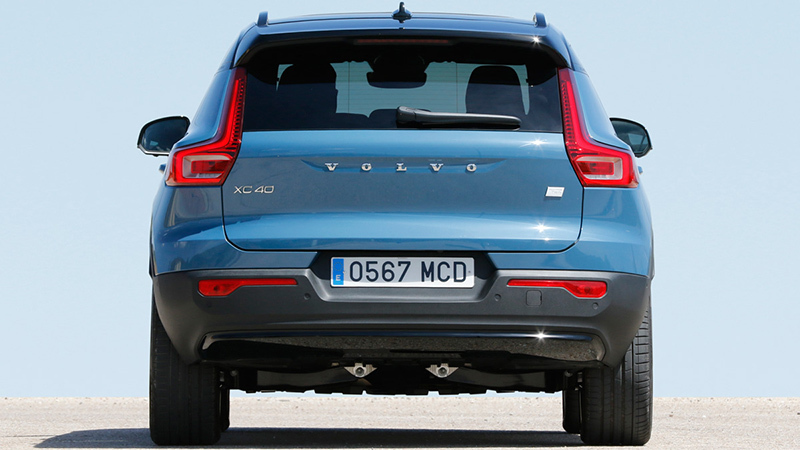
Reload
The XC40's power socket is located in the left rear wing. The standard charging cable (pictured) is type 2 and allows you to recharge the battery at up to 11 kW in alternating current. In direct current, the theoretical maximum charging power is 200 kW (previously, as of January 2023, this value was 150 kW).
These 200 kW are theoretical. At an ultra-fast charging station (350 kW), the maximum power we were able to charge at was 155 kW. However, we only tested this one, so we don't know if we would ever have reached the theoretical 200 kW at any other point. In any case, charging was reasonably fast.
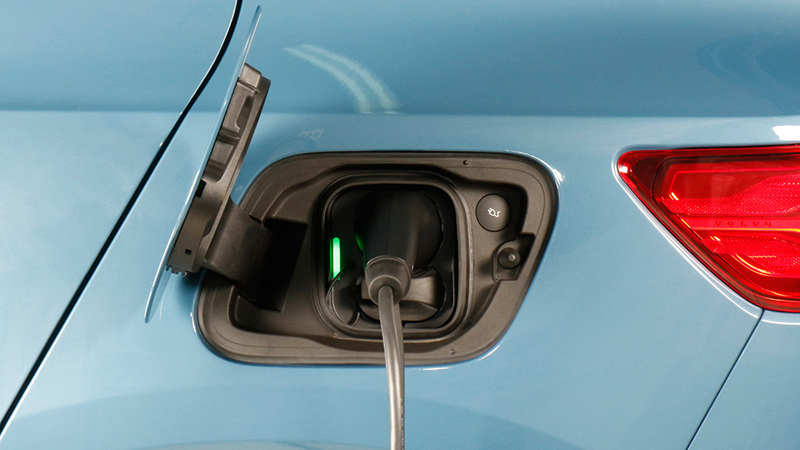
The time it took to go from 10 to 90% was 52 minutes. Not bad, but far from what Volvo promised (0 to 80% in 27 minutes).
Volvo says that starting from January 2023 it has improved charging management, and indeed it has. In the pre-2023 C40, charging speed dropped so much at 90% battery charge that it took about an hour to go from 90% to 100%. The XC40 with the January 2023 updates took about 25 minutes to complete the last part of the battery. However, Volvo does not recommend regularly charging the battery above 90%.
On another fast power outlet, 50 kW, we charged from 18 to 100%. At no time was the power higher than 37 kW (once again we don't know if this is due to a problem with the charging station or the vehicle itself) and the total time was 119 minutes.
Calculate your personalized quote on DRIVEK
In the charging menu of the multimedia system, charging can be managed in three ways: the battery filling level can be limited (from a minimum of 40% to a maximum of 100%, in increments of 10% at a time), it can also limit the current (from a minimum of 14 amps to a maximum of 32 amps, in increments of one at a time) and, finally, there is a section to program the charging times (start and end).
While charging, the instrumentation displays the estimated completion time, current battery level, as well as power and rate of range recovery.
SOURCE KM77.COM
#News #Volvo #XC40 #secrets #FormulaPassion.it